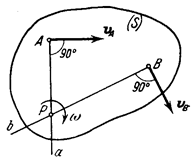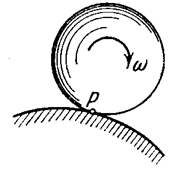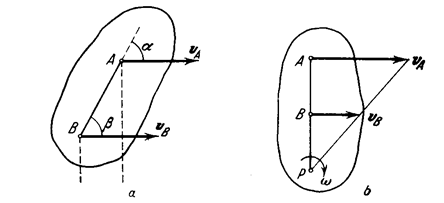
Заглавная страница Избранные статьи Случайная статья Познавательные статьи Новые добавления Обратная связь КАТЕГОРИИ: ТОП 10 на сайте Приготовление дезинфицирующих растворов различной концентрацииТехника нижней прямой подачи мяча. Франко-прусская война (причины и последствия) Организация работы процедурного кабинета Смысловое и механическое запоминание, их место и роль в усвоении знаний Коммуникативные барьеры и пути их преодоления Обработка изделий медицинского назначения многократного применения Образцы текста публицистического стиля Четыре типа изменения баланса Задачи с ответами для Всероссийской олимпиады по праву 
Мы поможем в написании ваших работ! ЗНАЕТЕ ЛИ ВЫ?
Влияние общества на человека
Приготовление дезинфицирующих растворов различной концентрации Практические работы по географии для 6 класса Организация работы процедурного кабинета Изменения в неживой природе осенью Уборка процедурного кабинета Сольфеджио. Все правила по сольфеджио Балочные системы. Определение реакций опор и моментов защемления |
Determination of the Velocity of a Point of a Body Using the Instantaneous Centre of Zero Velocity. Centrodes.
Learn the following words and word combinations by heart:
Ex.1. Look at Appendix 1 and read the following mathematical symbols. Another simple and visual method of determining the velocity of any point of a body performing plane motion is based on the concept of instantaneous centre of zero velocity. The instantaneous centre of zero velocity is a point belonging to the section S of a body or its extension, which at the given instant is momentarily at rest. It will be readily noticed that if a body is in non-translational motion, such one and only one point always exists at any instant t. Let points A and B in section S of a body (Fig. 22) have, at time t, non-parallel velocities
Fig. 22
If, now, we take a point P as the pole at time t, the velocity of point A will, by Eq. (50), be
as
It also follows from Eqs. (53) that i.e., that the velocity of any point of a body is proportional to its distance from the instantaneous centre of zero velocity. These results lead to the following conclusions: (1) To determine the instantaneous centre of zero velocity, it is sufficient to know the directions of the velocities (2) To determine the velocity of any point of a body, it is necessary to know the magnitude and direction of the velocity of any point A of that body and the direction of the velocity of another point B of the same body. Then, by erecting from points A and B perpendiculars to (3) The angular velocity of a body, as can be seen from Eqs. (53), is at any given instant equal to the ratio of the velocity of any point belonging to the section S’ to its distance from the instantaneous centre of zero velocity P: Let us evolve another expression for ω. It follows from Eqs. (50) and (51) that When
Fig. 23 Eqs. (55) and (56) give the same quantity, it follows that the rotation of the section S about either point A or point P takes place with the same angular velocity. It is easy to verify that both equations give the same answer. Let us consider some special cases of the instantaneous centre of zero velocity. (a) If plane motion is performed by a cylinder rolling without slipping along a fixed cylindrical surface, the point of contact P (for the section shown in Fig. 23) is momentarily at rest and, consequently, is the instantaneous centre of zero velocity ( (b) If the velocities of points A and B of the body are parallel to each other, and AB is not perpendicular to
Fig. 24
(c) If the velocities of points A and B are parallel and AB is perpendicular to
(d) If the velocity vector
Comprehension check.
|
||||||||||||||||||||||||||||||||||||||
|
Последнее изменение этой страницы: 2021-02-07; просмотров: 77; Нарушение авторского права страницы; Мы поможем в написании вашей работы! infopedia.su Все материалы представленные на сайте исключительно с целью ознакомления читателями и не преследуют коммерческих целей или нарушение авторских прав. Обратная связь - 3.144.154.208 (0.01 с.) |
 ,
,  ,
,  ,
,  ,
, 
 and
and  . Then point P of intersection of perpendiculars Aa to vector
. Then point P of intersection of perpendiculars Aa to vector  , then, by the theorem of the projections of the velocities of the points of a body, vector
, then, by the theorem of the projections of the velocities of the points of a body, vector  would have to be simultaneously perpendicular to AP (as
would have to be simultaneously perpendicular to AP (as  ), which is impossible. It also follows from the theorem that, at the given instant, no other point of section S can have zero velocity (e.g., for point a, the projection of
), which is impossible. It also follows from the theorem that, at the given instant, no other point of section S can have zero velocity (e.g., for point a, the projection of 
 ,
, , etc. (53)
, etc. (53) , (54)
, (54) , the sense of rotation of the body. Next, knowing
, the sense of rotation of the body. Next, knowing  of any point M of the body. Vector
of any point M of the body. Vector  in the direction of the rotation.
in the direction of the rotation. (55)
(55) and
and  whence
whence
 ; the result is the same for all other points of the body. Consequently, in this case the velocities of all points of the body are equal in magnitude and direction at every instant, i.e., the instantaneous distribution of the velocities of the body is that of translation (this state of motion is also called instantaneous translation). It will be found from Eq. (56) that the angular velocity ω of the body at the given instant is zero.
; the result is the same for all other points of the body. Consequently, in this case the velocities of all points of the body are equal in magnitude and direction at every instant, i.e., the instantaneous distribution of the velocities of the body is that of translation (this state of motion is also called instantaneous translation). It will be found from Eq. (56) that the angular velocity ω of the body at the given instant is zero.
 and
and  to locate the instantaneous centre of zero velocity P.
to locate the instantaneous centre of zero velocity P. .
.


